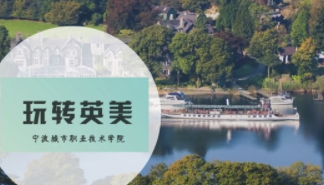
当前课程知识点:Culture and Tourism > Week 3: Heritage System: Managing and Safeguarding World Heritage Sites > 3.5 Case Study: Mongolian Altai > 3.5.2 Nature Culture Integration & the Mongolian Altai(2)
返回《Culture and Tourism》慕课在线视频课程列表
返回《Culture and Tourism》慕课在线视频列表
我很幸运 能够在蒙古的联系实践处理项目中探索自然文化交互的概念
这个项目 实地考察的重点是列入世界遗产名录的蒙古阿尔泰岩画综合体
由三部分组成的连环提名 包括广泛的摇滚或岩石标记 作为一个超过一万年的时间跨度创造的图像
我的同事与来自荷兰自然保护联盟(IUCN)和蒙古世界野生动物基金会(world widlife fund)的Bas Verschuuren一起工作
该小组是根据其成员 不同学科背景 两名文化遗产专家和两名自然遗产专家选出的
在这张幻灯片中 我试图展示一个观点 我们是不同领域的专家
所以在这里 我们已经通过了“确定”和“谁是谁”的考试 我使用的是专家 但我们必须考虑其他的专业知识
阿塔是蒙古保护区机构工作方式的负责人 是蒙古保护区系统的专家
还有司机呢
他有专长 对风景有一定的专长
我们还有其他的牧民 我们正在和他们交谈的人
他们对这片土地非常熟悉 并且对你们中那些理解你们对成为后人类的想法感兴趣的人有专业知识
那匹马呢
这匹马有专长 我让你考虑一下
我们的任务是更好地了解彼此基于学科的实践
并探索如何更好地将这些观点与自然保护联盟和国际古迹遗址理事会结合起来 这是世界遗产的责任
到目前为止 自然保护联盟和国际古迹遗址理事会通常但并不总是对拟议的混合科学世界遗产提名进行单独评估
也就是说 被提名的财产既有文化和自然的价值和属性 也有世界遗产系统中文化遗址的文化景观子类别
这里可能有一则轶事 我在一定程度上引用了这张幻灯片
因此 在实地考察的过程中 有一段时间 一个合适的老男孩因为雕刻了包括犀牛 鸵鸟在内的已灭绝动物物种而被广泛认可
因为摇杆很难说有在上面行走的危险
有一次 我给过去打电话 警告他 他即将踏上一个珍贵的图案或版画
因为他立即作出反应 正确地告诉我 事实证明 不要站在濒危的高山刺柏植物上
我们每个人都很清楚 在我看来 考古学在过去的生物多样性阶段是什么样的特权
因此 对我来说 蒙古之旅是一次不可思议的经历 不仅是因为所进行的具有挑战性的身体之旅 还因为所需要的集体和个人的智力之旅
我只想提出三点意见来说明这些观点
首先 岩石上的标记说明了年代 以及人类和其他动物物种之间的现代关系
因此 在将蒙古阿尔泰的岩相复合体列为文化面和文化景观时
岩石雕刻等物理属性及其相关的文化特征是对强大自然属性(包括在其景观中发现的野生动物物种)的独特洞察管理
这些动物包括非常动物 如雪豹 野山羊 和golly wow 绵羊和驯养的马 是代表在岩石市场
从相互联系的自然属性中分离出的物质 歪曲了文化的整体性 纠缠性
实际上 这可能会导致一种脱节的管理体制 在这种体制中 文化价值被视为具有普遍价值 也就是说 摇滚艺术可能会从例外中分离出来
后者包括驯养的马 羊
第二 如图所示的当地神圣的Shiveet Khairkhan山所示
将自然景观特征从其精神意义上分离到当代和过去的地方社区是有问题的
Shiveet Khairkhan在国际自然保护联盟的术语中是一个神圣的自然遗址 具有丰富多样的自然资源 对个人和社区具有特殊的精神意义
希维特汗的崇拜源于古老的海岸 狂躁的传统往往依赖于人与动物的互动以及随后的佛教传统
在这种宗教制度下 希维特·哈伊尔汗还要接受其他形式的精神实践和治理
例如 没有人听到男人不允许在山上狩猎的当地野山羊和大蒜形状
因此 正如Shiveet Khairkhan的例子所示 文化与社会自然价值的分离是人为的 没有承认生活在景观中的强大的纠结体验
第三点我要进一步强调的是居住在自然景观中 蒙古阿尔泰有着深厚的延续游牧传统的早期流动帕塞利姆很可能在这个地区练习了近四千年
证据 例如 在青铜时代的岩石艺术
尽管没有人听到种族构成的变化 但随着时间的推移 艺术或标志制作传统仍在继续
尽管它们不一定是持续不断的 作为艺术变化或描绘的主题的证据 与流动的牧歌有关 当地特有的知识 技能 实践 如用鹰狩猎 具有两千多年历史的实践
岩石标记也出现了相对较新的阶段
最明显的是 命名日期和百万年前图案的复制品的位置是显而易见的
重新修行天气的原因是造地 而唯心论尚不清楚
然而 这说明了无论什么时代的岩石艺术对当地社区具有当代意
尽管如此 世界遗产名录 方大石艺术的过去和其他人
对我来说 蒙古阿尔泰 我仍然拥有令人惊叹的一面 从主人和同伴那里学到了很多东西 有时感觉超负荷
它是一幅风景画 展示了人们在地方 自然和文化中交互的方式
综上所述 以联合国教科文组织世界遗产体系为例 说明自然与文化的分离 是西方两百多年哲学思想的产物
这不仅是西方国家的问题 也是那些非西方国家 如中国 土著群体和当地社区的问题
我建议重新思考自然和文化之间的交互 并采取某种方式来解决这个问题
谢谢 希望你喜欢这个讲座
-1.1 Introduction course outline and UNESCO World Heritage Program
--1.1.1 Introduction of culture and tourism course outline
--1.1.2 Introduction of UNESCO World Heritage Program(1)
--1.1.3 Introduction of UNESCO World Heritage Program(2)
-1.2 Cultural Heritage-1
--1.2.1 The meaning of culture heritage
--1.2.2 Criterion(i): masterpiece of human creative genius
--1.2.3 Criterion(ii): exhibit important interchange of human value
--1.2.4 Criterion(iii): bear a unique or at least exceptional testimony
--How can the public understand the importance of heritage?
-1.3 Cultural Heritage-2
--1.3.1 Criterion(iv): an outstanding example in human history
--1.3.2 Criterion(v): represent a culture or human interaction with environment
--1.3.3 Criterion(vi): associated with living traditions of outstanding universal significance
-1.4 Natural Heritage
--1.4.1 Natural heritage features, formations and criterions
--1.4.2 Cases studies of natural heritage
--Cultural landscape meanings: The case of West Lake, Hangzhou, China
--How to access heritage of your hometown?
-2.1 Mixed Culture and Natural Heritage
--2.1.1 Mixed heritage operational guidelines and cases (1)
--2.1.2 Mixed heritage operational guidelines and cases (2)
--2.1.3 Mixed heritage operational guidelines and cases(3)
-2.2 Authenticity, Integrity and Cultural Routes
--2.2.1 How to determine authenticity and integrity
--2.2.2 Heritage routes and heritage canals (1)
--2.2.3 Heritage routes and heritage canals (2)
--What do you think about cultural heritage categories?
-2.3 Special Heritage and Sustainable
--2.3.1 Physical remains of the history of technology and industry
--2.3.2 Transboundary Heritage, Serial Heritage, Serial/Transnational Heritage
--2.3.3 Intangible cultural heritage
--2.3.4 UNESCO World Heritage and Sustainable Tourism Programme
--Recovering the Memory of Ourselves for the Sustainable Cites
--Week 2 quiz
--What do you think about cultural heritage categories?
-3.1 The Australia’s Heritage System and Sydney Opera House
--3.1.1 The Australian Heritage System
--3.1.2 Case Study: The Sydney Opera House
-3.2 Role of the ISCCL and Cultural Landscape (1)
--3.2.2 Uluru-Kata Tjuta National Park
--3.2.3 Honghe Hani Rice Terraces
-3.3 Role of the ISCCL and Cultural Landscape (2)
--3.3.1 West Lake cultural landscape (1)
--3.3.2 West Lake cultural landscape (2)
-3.4 Rural Landscapes as Heritage
--3.4.1 ISCCL Principles Concerning Rural Landscapes as Heritage
-3.5 Case Study: Mongolian Altai
--3.5.1 Nature Culture Integration & the Mongolian Altai(1)
--3.5.2 Nature Culture Integration & the Mongolian Altai(2)
--Week 3 quiz
--Discussion: What do you think is the role of ISCCL?
-4.1 Introduction of the Meaning of 'landscape’
--4.1.1 Brief introduction of landscape and culture
--4.1.2 The conceptual framework of cultural landscape
-4.2 Landscape Values
--4.2.1 The word “landscape” itself and differences in Western, Eastern
--4.2.2 Cultural significance for heritage source
--Discussion: What do you think the cultural landscape attracts you?
-4.3 Reading the Landscape: Identification and Assessment
--4.3.1 Planning model for heritage conservation management policy
--4.3.2 Cultural landscape resources evaluation steps
--Article: Cultural mapping: Intangible values and engaging with communities with some reference to As
-4.4 Case Study: Wingecarribee Historic Landscape
--4.4.1 Case study:Wingecarribee historic landscape study(1)
--4.4.2 Case study:Wingecarribee historic landscape study(2)
--Week 4 quiz
--Discussion: What should we do to strengthen the protection of cultural landscape?
-5.1 Indigenous Tourism
--5.1.1 Indigenous tourism background
--5.1.2 World heritage and indigenous peoples
--5.1.3 Tourism issues at Canadian indigenous world heritage sites
--Discussion: What challenges indigenous World Heritage faces?
--Article: State conceptions of indigenous tourism in Chile
-5.2 Case Study and Conclusion: Great Expectations for Tourism
--5.2.1 Case study Pimachiowin Aki
--5.2.2 Conclusions:Great Expectations for Tourism
--Disussion: Do you have any experience of indigenous tourism?
--Week 5 quiz
-6.1 The Definition of Heritage in Heritage Performance Study
--6.1.1 The definition of heritage in heritage performance study
--6.1.2 Heritage performance and meaning making
--6.1.3 Two key issues emerging from qualitative study
-6.2 Heritage Performance - Evidence from Australia, England and USA
--6.2.1 Heritage performance - reinforcement
--6.2.2 Heritage Performance - inter-generational communication and social values
--6.2.3 Heritage performance - recognition and respect
--6.2.4 Heritage performance - education
--Article:Theorizing museum and heritage visiting
-6.3 The Conclusion of Heritage Performance
--6.3 The conclusion of heritage performance
--Week 6 quiz
--Discussion: What kinds of heritage performances have you learned in this week?
